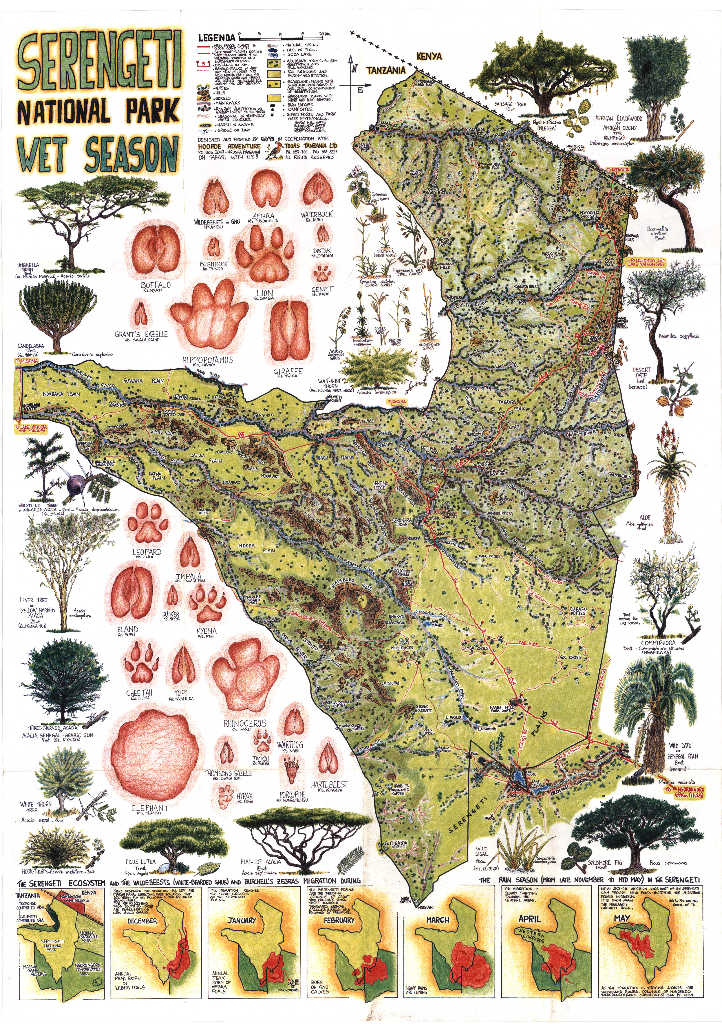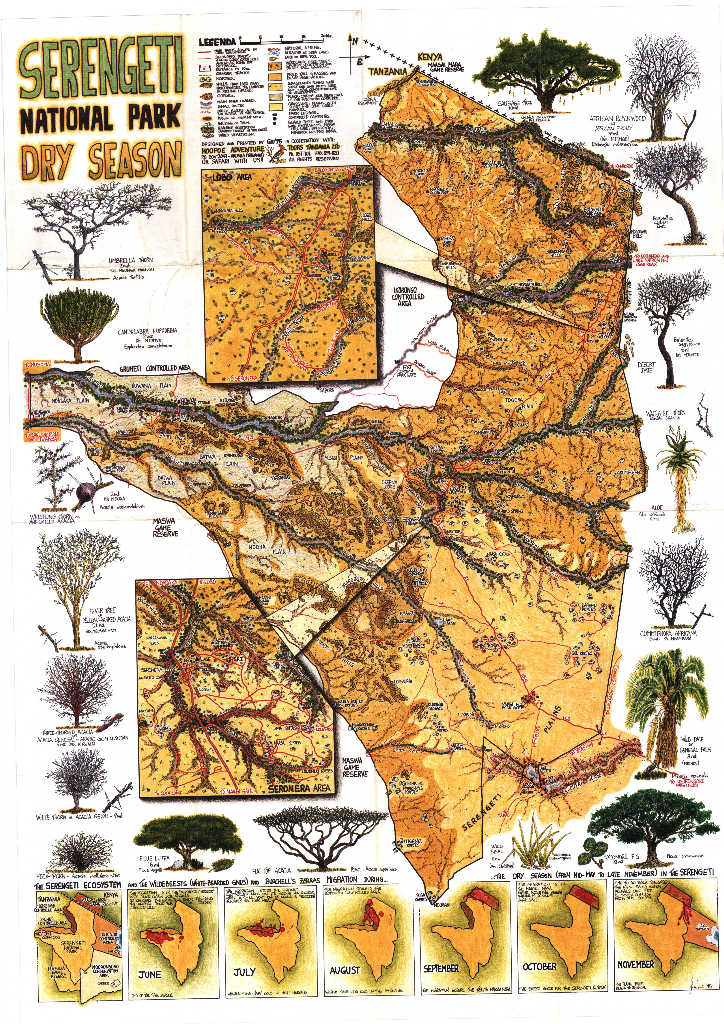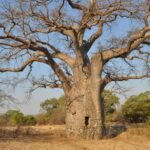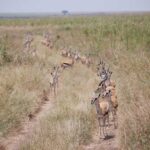The Serengeti is the most famous and important park in all of Africa with a unique savannah ecosystem. Over 15,000 sq km of savannah full of flora and fauna including lions, leopards, cheetahs, giraffes, elephants, migratory animal, more than 500 species of birds and many other attractions. At least 2 nights must be dedicated to this park, without forgetting the sunrise Balloon safari. You can find many residential animals in the Central area of the Serengeti (Seronera area), you will go to the areas of Ndutu, Western Corridor, Lobo, Bologonya, and Mara to see the Great Migration. Our safari experts can advise you regarding the best itinerary to see The Great Migration between Serengeti, Ngorongoro, and Mara Ecosystem, a must-see exceptional attraction worldwide.
Size: 14.763 kmq.
Location: 255 km from Arusha town to Naabi Hill (Entrance gate to Serengeti) and the first 150 km are tarmac and the last 105 km dirt road. Driving time is 5 to 6 hours. From Naabi Hili to Seronera there are other 60 km of dirt road and driving time is 1 hour or so.
Park Seasons: There are two well-defined seasons in Serengeti which is dry and wet seasons. The dry seasons starts from from June to October and wet seasons from November/December to May with less or no rainy on January – February.
Expected Activities: You will have a chance to experience game drives in a well organized road network, or a Sunrise Balloon Safari, A short nature trail at Naabi Hill and Visitors Information Center at Seronera, the best of its kind in Tanzania, lastly is guided nature work through the savannah.
When you are in Arusha and you need to have a safari, usually at first you will visit Arusha, Tarangire and Manyara National Parks, then enter the immense ecosystem that includes Ngorongoro Conservation Area and Serengeti National Parks, an extremely popular park receiving large number of visitors in a year.
Below are the maps of the Serengeti during dry and wet seasons, the lower part of the map shows the movements of the Great Migration month by month.
Usually, the entrance to the park is from Naabi gate where we can go up to the panoramic point to see this boundless plain above, we find many residential animals in the Central area of the Serengeti and Seronera, we will go to the areas of Ndutu, Western Corridor, Lobo, Bologonya, and Mara to see the Great Migration.
The park is characterized by the Kopjes, known as Simba Kopje, Masai Kopje, and Moru Kopje, small granite hills in this immense plain where many animals, small and large, find shelter. Also there are open grassy plains, Big herds of migratory plain animas and some of endemic bird species.
The park is dominated by lush vegetation in April and May everything changes thanks to the rains, it is a great time to visit the park, with no dust, and many animals and there are special offers for the low season.
For more information on Serengeti Park, you can read “Serengeti National Park“.
Here are the maps to take with you to orient yourself during the safari in the Serengeti. This map is on sale in Arusha in bookstores and at street vendors.
THE MAP OF SERENGETI DURING WET SEASON
The wet season runs from November to May in this period we record the “short” rains in November and the rainy season in April and May with excellent low season offers.
The months of January and February are the best months for the Great Migration in the Ndutu area between Serengeti and Ngorongoro, February is the calving season for the wildebeest.
Central Serengeti is always full of residential animals. Daytime temperatures reach 28-30 ° C while lows rarely drop below 18 ° C. The rains are short-lived and rarely interfere with the game drive when accompanied by a professional guide aboard a 4×4 jeep.
THE MAP OF SERENGETI DURING DRY SEASON
The dry season runs from June to October and is a great time for safari in Central Serengeti and Northern Serengeti, herds of wildebeest and zebras move north from the Western Serengeti (Western Corridor) crossing the Grumeti and Mara rivers in search of new pastures towards the wettest area of the park.
Daytime temperatures reach up to 27-28 ° C in September and October, the minimum can drop to 15 ° C, the months of June and July are the coolest of the year. It is always better to have a fleece or heavy sweater and a jacket for cooler evenings and game drives at dawn.
ALL THE TANZANIA NATIONAL PARKS MAPS
-
- Northern Circuit National Parks – this map includes all the parks
- Arusha National Park – you can experience nice walking safari
- Tarangire National Park – you can see teh biggest elephants
- Manyara National Park – the home of biodiversity
- Ngorongoro Conservation Area – the highest wildlife density all over Africa
- Serengeti National Park – the endless plain
SAFARI IN SERENGETI
The Serengeti is the most beautiful park in all of Africa, for an unforgettable safari, it is best to rely on a local expert who knows where to take you according to the period. Our best-selling Serengeti safaris are:
If you want to see many animals and see the Great Migration you can choose one of our safaris by contacting us through our website or by email or Whatsapp
- info@savannahexplorers.com
- Whatsapp +255 765 972 458











What is the size of these maps? Are the folded or rolled? How do we order them?
Those are folded maps, you can buy only in Tanzania, I don’t think you can order online.